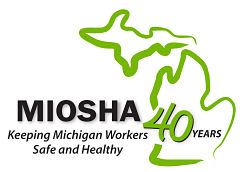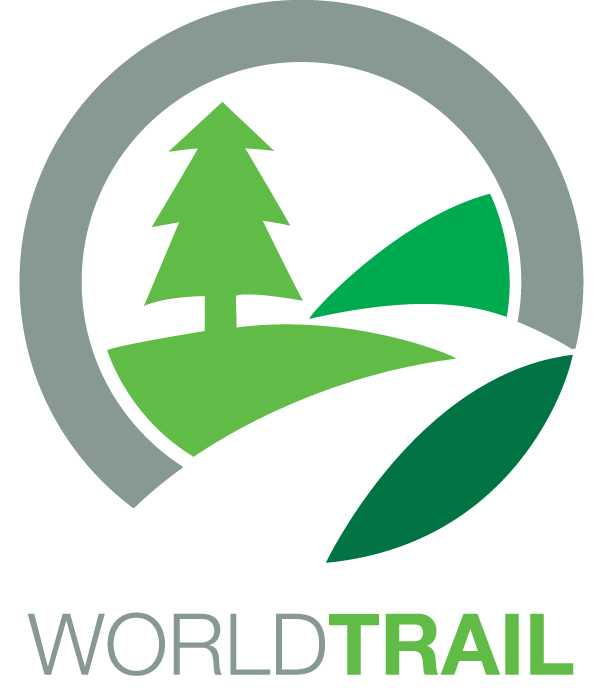Title Page
-
Site conducted
-
Conducted on
-
Prepared by
-
Location
-
Tunnel Manager (A Grade) Sign Off
Surface Inspection
-
Are the entrance control signs and the AME access recording system in place?
-
Is surface site security and gates in order?
-
Are the site buildings, toilets and infrastructure being maintained and in good order?
-
Is the housekeeping around the shaft top / surface area / access ways in order?
-
Are the working areas free of Slips, Trips and Fall Hazards, are there Safe Work Conditions?
-
Are the emergency access clear from obstacles?
-
Are walkways around the site defined and providing adequate separation of plant, vehicles and pedestrians?
-
Are pedestrians excluded from working areas of plant such as cranes, excavators and forklifts by sufficient barricades or entry controls?
-
Are warning systems such as prestart alarms, horns, travel alarms & working lights on plant such as cranes, excavators and forklifts operational and being used?
-
Are the barriers around the shaft collar in order?
-
Is the Mine Area entrance gate in good order and fit for the authorised movement of plant & materials?
-
If boom gates are installed, are they closed and functional?
-
Has the Scaffold and Ladderway been Inspected/Tested and Tagged? Date of Inspection should be recorded.
-
Is the Tag board in order?
-
Is the emergency contact list up to date ?
-
Are Self-Contained Self Rescuers in good condition and instructions displayed?
-
Has the gas measuring equipment been tested, and is everything in good working order?
-
Before the start of each shift, has the daily bump testing of the gas monitors been done?
-
Is the communication systems in order and effective (Radios & Phones)?
-
Is the radio channel/telephone list up to date ?
-
Does the ventilation fan and infrastructure appear in order?
-
Is water discharging from the shaft and the water condition and volume appear normal?
-
Are any dust emissions/conditions being adequately managed?
-
Is potential spillage adequately managed (bunding and spill kits in place etc.)?
-
Is Hazardous Substance Storage correct and compliant?
-
Are Safety Data Sheets available?
-
Is the rigging and lifting gear “Fit for Purpose”, Inspected/Tested and Tagged, and safe to use?
-
Are Oxy Acetylene sets correctly secured and flash back arresters fitted?
-
Have pre-start checks on machinery been completed, documented and maintenance/repair issues reported?
-
Has the U/G Diesel-powered Plant/Machinery Register been kept up to date, and undiluted gas tests been completed?
-
Is the Muck Bay being managed appropriately?
-
Are Noise areas been monitored and signposted?
-
Are Work Permits authorised and held on site?
-
Are the Lockout and Isolation systems correctly in place?
-
Person “Authorisation to Operate” for the ventilation fan documented and operating instructions displayed.
-
Person “Authorisation to Operate” Plant and Machinery documents completed (VOCs and Appointment Letters)?
-
Are effective Barricades in use where required?
-
Is the Mine Area Layout as per the issued Plan
-
Are there adequate Construction Site Safety Signs placed where necessary?
-
Are the Principal Hazard Management Plans (PHMP) available?
-
Are the Principal Control Plans (PCP) available?
-
Is the current Safe Work Method Statement (SWMS) available?
-
Are Task Cards and Observation Cards available?
-
If a Standard Operating Procedure (SOP) is required for a work method, is it available and has it been communicated to the workers effectively?
-
Are the welfare facilities appropriate?
-
Spot check a workers VOC details for equipment being operated – is this in order?
-
Is there a record (the sign in register) being kept at the Tag-in Station of the time that people enter and exit the underground workings? (AME electronic system in place)
-
Has the Tunnel Supervisor been thoroughly implementing Regulation 222 (Examination of mining operations)?
Underground Inspection
-
Is the ventilation ducting in order and leak free, has the Ventilation System been checked/inspected, and is there “Fresh Air” ventilating the shaft and tunnel?
-
Are Safety Harness checked before use and have current Inspected/Tested and Tagged?
-
Lifting systems working to Standard Operating Procedures (SOPs) and safe to use?
-
Is the Shaft wall in good condition and free of fall objects?
-
Have Electrical Hazards & Controls been checked/inspected and have the Electrical Superintendent Inspections been conducted?
-
Have Mechanical Hazards & Controls been Checked/Inspected and have the Mechanical Superintendent Inspections been conducted?
-
Are the workers “Fit for Work” and competent for the tasks to be undertaken?
-
If Hot work is undertaken, is it safe and is there a permit issued and signed off by the Tunnel Manager?
-
Are power cables been checked for any visual damage or defects?
-
Are Electrical leads elevated, protected & been Inspected/Tested and Tagged?
-
Are Power Tools safe to use, been Inspected/Tested and Tagged?
-
Are safe work practices (SWP) being applied and U/G workers wearing SCSRs?
-
Is a valid Required Excavation Support Sheet (RESS) and Excavation Permit (EP) posted at the Shaft Entrance?
-
Is the site free of any indication of potentially unstable ground or strata?
-
Is the site free of any indication of a potential inundation of water or slurry?
-
Are the ground or strata conditions manageable regarding extraction, potential instability and potential inundation?
-
Is the groundwater inflow rate at a manageable rate?
-
Is the water level OK in the shaft/tunnel?
-
Are the pumps working and appear in good condition?
-
Are service pipe installations, manifolds, valves, lock-outs etc. in order?
-
Is lighting adequate and compliant?
-
Are stairway and ladderway in good condition including edge protection structures?
-
Are there two means of access readily available to the Shaft?
-
Is the davit arm (if installed) ready to be used, have current tags, and have an unobstructed swing path and landing area?
-
Has all equipment been Inspected/Tested and Tagged and “Fit for Purpose”?
-
Does the underground excavator appear in order? Check a prestart has been completed on QuipCheck
-
Is the underground communication system in order (Radios & Phones)?
-
Are the working areas tidy and free of Slips, Trips and Fall hazards (Safe Work Conditions)?
-
Does all machinery and plant appear to be in order (Fit for Purpose Equipment) and Roll Over Protection Structure (ROPS), Fall Object Protection Structure (FOPS) where required?
-
Overall, is there a Safe Work Environment for Workers?
-
Is the shift prestart available?
-
Are Exposure Monitoring Systems and Controls in place for Oxygen Deficiency, Toxic Gases, Noise, Airborne Dust, Diesel Particulates, Fumes, Vibration, Atmospheric Pressure, Fatigue and Working Hours, Psychological Hazards, Ultra-Violet Radiation, Biological Hazards, Hazardous Substances, Damaging Energies (Stored, Kinetic etc), Temperature and Humidity, Manual Handling and Lifting, any other Hazards and Risks being Identified?
Personal Protective Equipment
-
Are there sufficient stocks of PPE available, and is there adequate PPE signage displayed?
-
Do people walking along the tunnel have reflective Helmets?
-
Are any breaches of PPE compliance observed?
-
Are appropriate dust masks available and worn if required?
-
Safety harness & lanyards been Inspected/Tested and Tagged?
Emergency Planning
-
Is the Emergency Management Principle Control Plan (PCP) available?
-
Have Emergency Management Controls been checked, inspected, and are they prepared and ready?
-
Are the Emergency TARPs, Standard Immediate Actions and Event Flowcharts displayed?
-
Emergency Contact names/phone numbers and the Hot-Line number displayed and up to date. Are there adequate emergency information signs in place?
-
Emergency Evacuation procedure displayed? Is the Emergency evacuation exit identified and having a clear pathway without obstructions?
-
Are the Emergency instructions & procedures understood by the workforce with regular reminders?
-
Is the Site Plan (map) with emergency response and evacuation areas displayed?
-
Is there adequate First Responders available for the shift?
-
Is first aid equipment adequate and located close to the work area?
-
Is the Rescue Stretcher, Trauma Bag, Resuscitation Bag Mask Kit and Defibrillator ready at the shaft?
-
Is there information displayed regarding the First Responders and their equipment?
-
Are there adequate persons trained in Advanced First Aid, Rope Rescue, Firefighting & the use of Airbags?
-
Is there adequate firefighting equipment, and has it been Inspected/Tested and Tagged? Both surface and Underground
-
Has the Emergency Management Control Plan (PCP) been tested recently?
-
On this inspection, have portable fire extinguishers been checked for leakage, corrosion, blocked discharge hose and for any other signs of damage?
-
And have the pressure gauges been visually checked for an indication of adequate discharge pressure and flow?
-
Have the underground excavators with automatic wet foam extinguishers also had their monthly inspection?
-
Is the fire extinguishing equipment the correct type for the fire risks identified at their locations: CO2, Dry powder, Wet foam, Water, Blanket? Are their locations accessible with no obstructions?
-
Is Equipment in good condition? With appropriate signage indicating the type of extinguishing equipment? Has the Principal Hazard of “Fire or Explosion” being managed effectively?
-
Overall, does Emergency Management have good planning and preparedness for a prompt response?
List Actions
-
Are all actions from previous inspection closed out?
-
List Actions
-
No new actions?
-
List Actions












